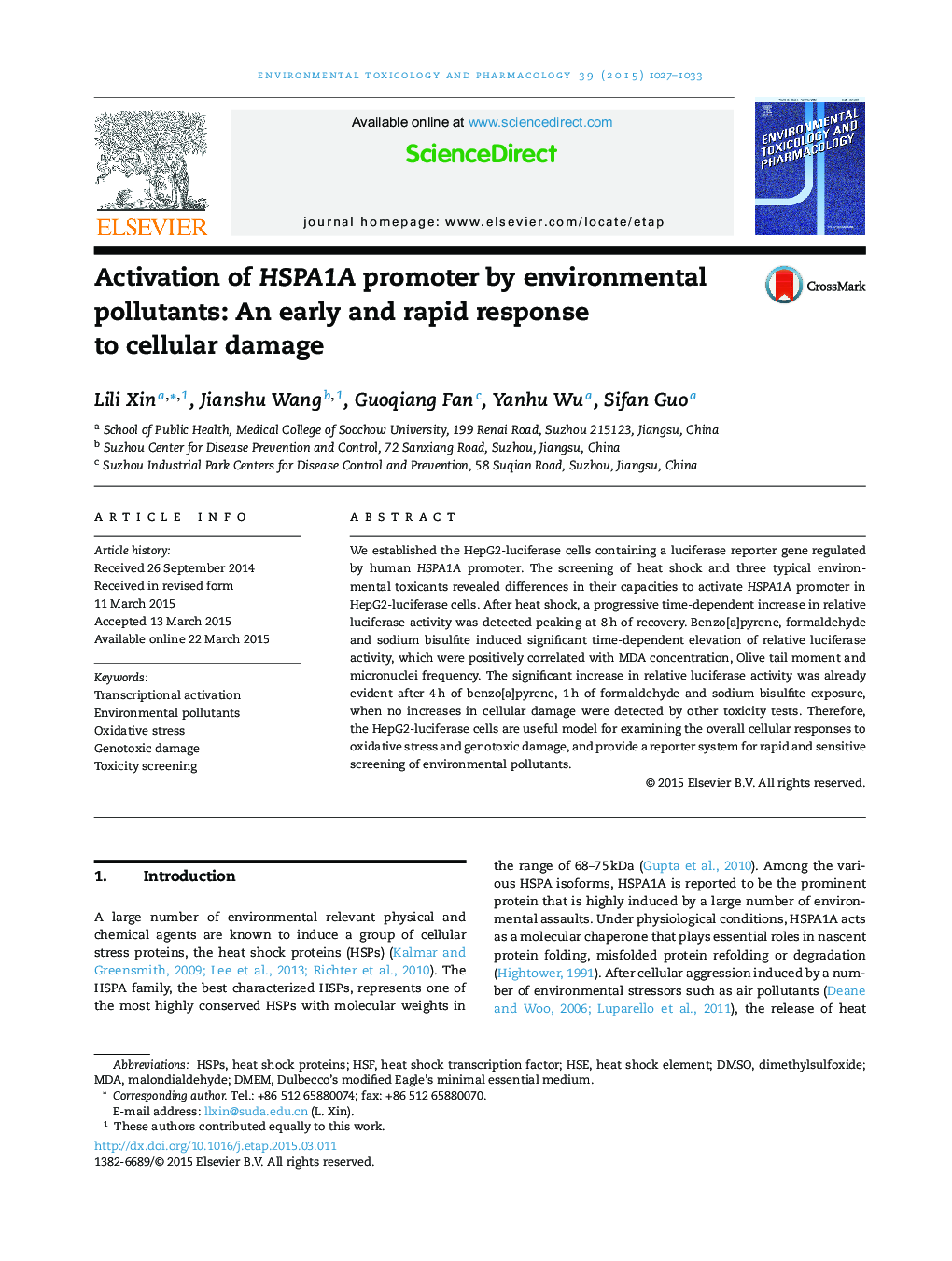| Article ID | Journal | Published Year | Pages | File Type |
|---|---|---|---|---|
| 2583136 | Environmental Toxicology and Pharmacology | 2015 | 7 Pages |
•We established the stable HSPA1A promoter-driven luciferase reporter HepG2 cells.•Environmental pollutants induced time-dependent increases in luciferase activity.•HSPA1A promoter activity is a sensitive and responsive indicator of the toxicity.•HepG2-luciferase cells can be used to assess the overall toxicity of pollutants.
We established the HepG2-luciferase cells containing a luciferase reporter gene regulated by human HSPA1A promoter. The screening of heat shock and three typical environmental toxicants revealed differences in their capacities to activate HSPA1A promoter in HepG2-luciferase cells. After heat shock, a progressive time-dependent increase in relative luciferase activity was detected peaking at 8 h of recovery. Benzo[a]pyrene, formaldehyde and sodium bisulfite induced significant time-dependent elevation of relative luciferase activity, which were positively correlated with MDA concentration, Olive tail moment and micronuclei frequency. The significant increase in relative luciferase activity was already evident after 4 h of benzo[a]pyrene, 1 h of formaldehyde and sodium bisulfite exposure, when no increases in cellular damage were detected by other toxicity tests. Therefore, the HepG2-luciferase cells are useful model for examining the overall cellular responses to oxidative stress and genotoxic damage, and provide a reporter system for rapid and sensitive screening of environmental pollutants.
